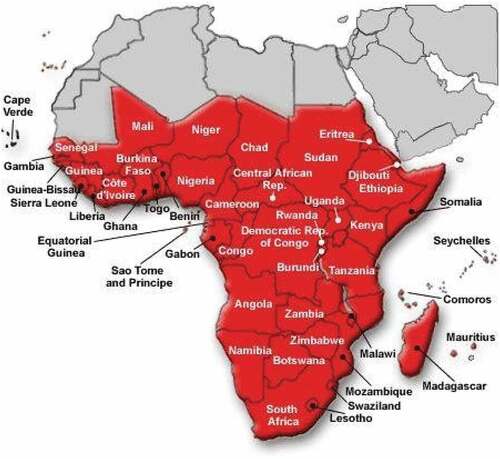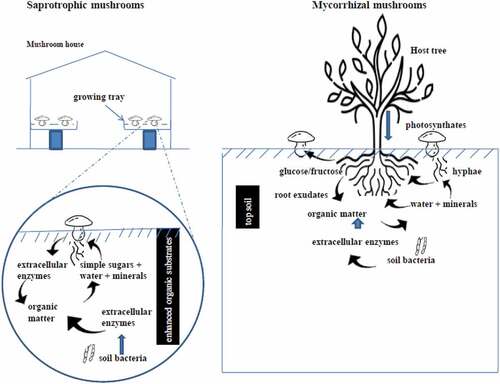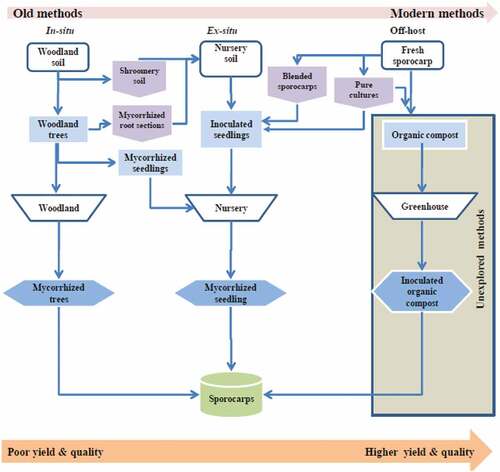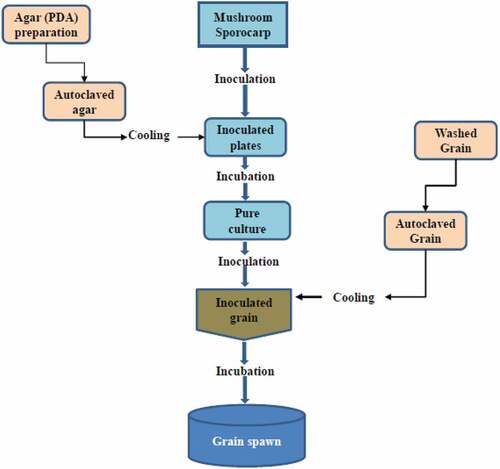Figures & data
Figure 1. A map of Africa showing the relative expanse of the Sub-Saharan region shown in red. Source: https://www.researchgate.net/figure/A-physical-geography-map-of-Africa-from-the-Perry-Castaneda-map-collection_Figure2_32898263 (Accessed 11 October 2022).

Table 1. List of abbreviations used
Table 2. Substrates in use and substrate preparation methods for different saprotrophic mushroom species categories
Table 3. Comparison of cultivation methods for saprotrophic versus mycorrhizal mushrooms
Figure 3. Comparison of subterranean and aerial environments between saprotrophic and mycorrhizal mushroom cultivation.

Table 4. Cultivated mushrooms in SSA by country, genus of mushroom produced, number of mushroom species cultivated, purpose for production and references
Figure 4. Stepwise process of mycorrhizal (excluding truffles) mushroom commercial cultivation over the years.


